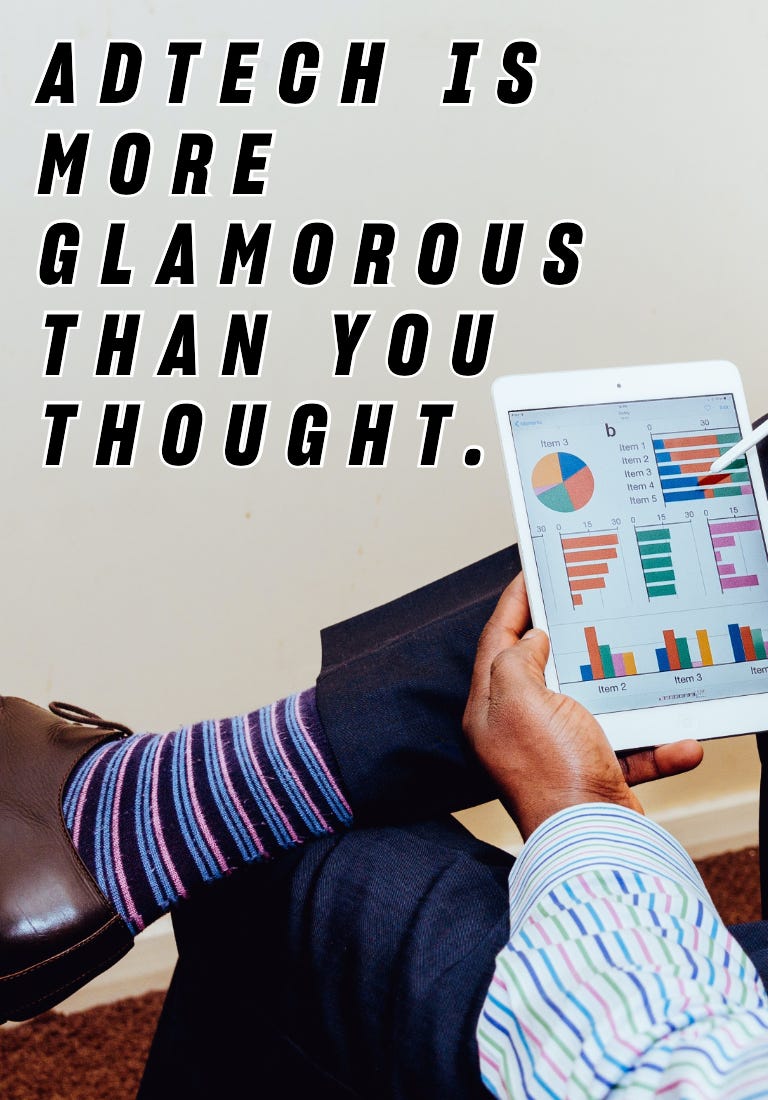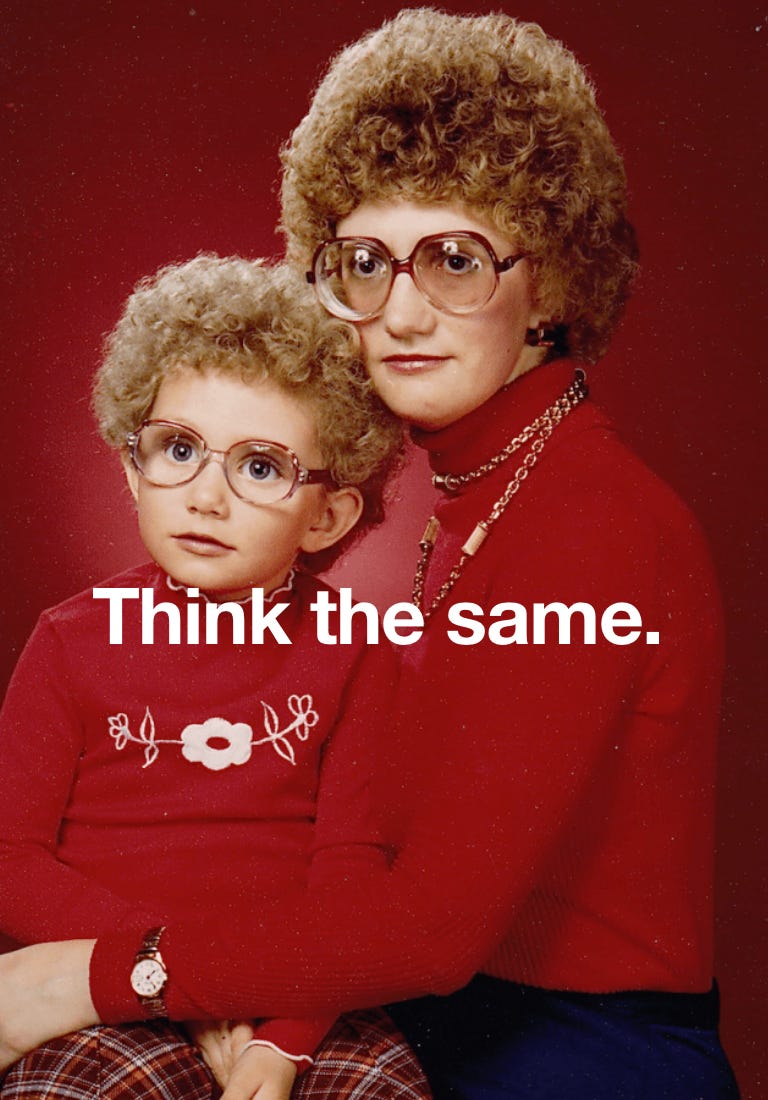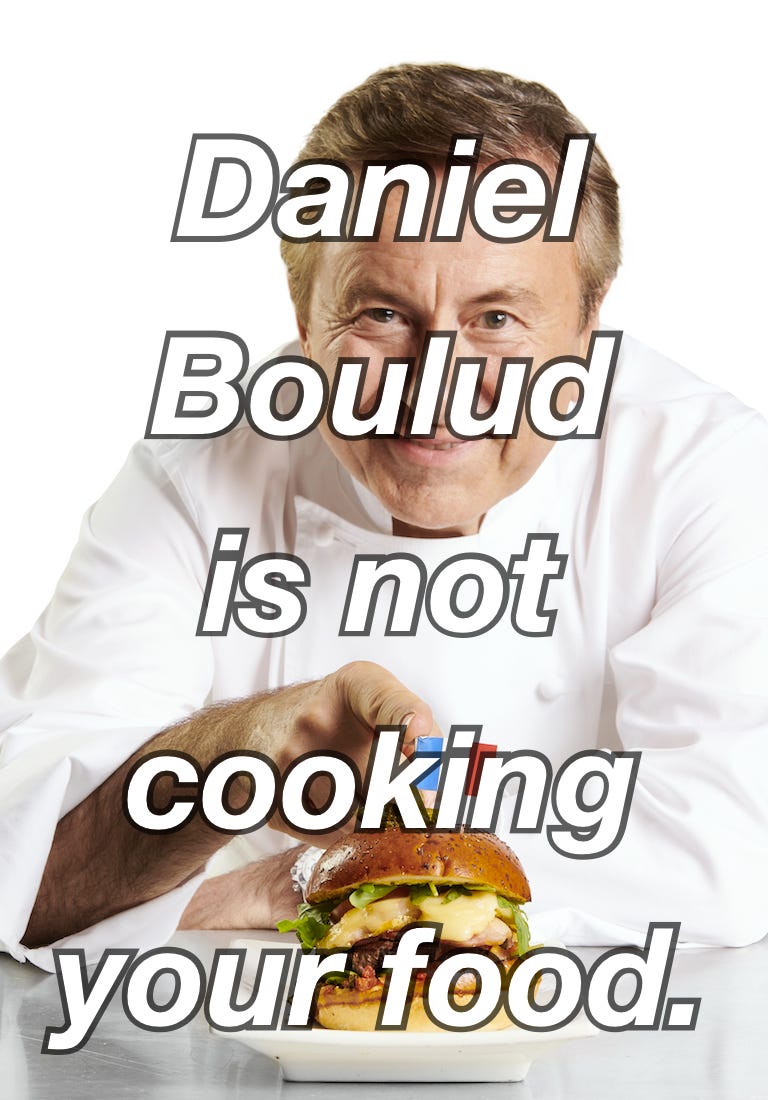Separating fact from fan fiction
Processing crypto hype, Virgil Abloh, Budweiser and Adidas go meta, meme or aphorism, Dominic Fike.
Welcome to People vs Algorithms #8.
I look for patterns in media, business and culture. My POV is informed by 30 years of leadership in media and advertising businesses, most recently as global President of Hearst Magazines, one of the largest publishers in the world.
Get my weekly email here:
When the New York Times starts writing about commercial real estate transactions in the metaverse, a reasonable observer might think things are getting a little frothy. If you are like me, you enjoy the craziness. Others may feel a little overwhelmed. A natural reaction might be to dismiss crypto / metaverse stuff entirely, but to do so would likely be shortsighted. Better to dig in a bit and work on separating signal from noise. I’ve seen disruptive moments before. This feels like one.
First (depending on your age of course), appreciate that there’s a generation of folks that probably don’t think anything like you. They definitely don’t consume media like you do. Especially the gaming generation. If you want to decode this wave of change, bring a willingness to explore and wide-open mind.
I am not just talking about Gucci selling bags on Roblox. That seems perfectly reasonable. But generational trends that run deeper. Wildly engaged creators are inventing their own cinematic universes and a new world of fandom inside open gaming environments like Minecraft—narratives that live on and off the gaming platforms. These are not passing childhood fancies but important cultural forces impacting a generation’s perspective on value, money, community and media.
A pragmatic approach might be to both open yourself up to unconventional ideas and remember that much of what lasts needs to bring some logic of utility. Most change that sticks does so because it makes things more entertaining, easier, cheaper, faster etc. There’s hype, there cultural evolution and there’s real stuff that makes life better.
There’s also timing. Utility is not enough. Ideas require the rails to work—hard things like fulfillment infrastructure, powerful phones, fast networks and the Cloud. Average consumers need to be conditioned to the new. It’s been my experience that change comes in waves—the first creates curiosity, cultural context and a small set of winners to jump start a market. Euphoria likely leads to a correction. Then real change begins.
Internet history is filled with good ideas and bad timing: pets.com, boo.com, kozmo.com, webvan.com, etoys.com. All received huge amounts of funding. All failed. All were born again later. The utility was there, but the timing wasn’t right. The world hadn’t built rails yet. And consumers weren’t quite ready.
Leaders break through in each cycle and make the market safe for others to follow. Amazon launched in 1994. Bezos found a crack with the simple, differentiated value proposition of “world's largest book store.” Books are easier to ship than pet food. And harder to source. Amazon conditioned the market. Category expansion followed, then one click ordering, the Cloud, Prime. And Covid.
While it may feel like we have reached peak e-commerce, it seems to me we are just at the beginning. Our notions of retail are deeply connected to the idea of a catalog, a shopping cart and a store. But, when a product is just an entry in a database, when all the fulfillment pipes are connected, when your wallet and profile are digital, and a transaction can happen anywhere, the nature of merchandising and selling change fundamentally—they explode into a million pieces, reconfiguring around sources of inspiration and authority.
The pace of innovation is robust in the commerce space, akin to early adtech. From payments, supplier integration, fulfillment, dropshipping, one-click check out, gifting, merchant promotion networks, the entire space is being refactored very quickly though companies like Square, Stripe, Paypal, Shopify, Bolt, Cheque, Carro, Convictional, Honeycomb Commerce. Not even Jack Dorsey could keep up with the pace of change and decided maybe Square was a full-time job.
In the end every surface is transaction enabled, retail is unrecognizable.
I remember the first internet wave well, which is why this feels familiar. I ran a digital agency called Organic in Toronto in the late 90’s and early aughts. Organic was born in San Francisco at the very beginning of the first internet boom and was central to many of the high-profile web projects of the era. That time felt frighteningly like the present. Everything was new. Our aspirations, a new vocabulary, technology platforms, development processes, the integration of disciplines, all greenfield. User-centered design was in its infancy.
Navigating a fundamental shift from one-way mass to two-way interactive media, we learned basic lessons in designing for consumer utility— like indulgent Flash animations were cool to us but annoying to users. The singularity of a spartan Google search bar and lightning fast results page was a monument to the idea and went on to be… well, Google.
The internet was about to change the world. Except the world wasn’t ready. The end was surreal. Overnight the hype was turned to a simmer. The 2000 crash reset expectations and forced everyone to digest for a couple of years. But eventually everything we had been talking about came true. Change comes in waves. It rolls in and retreats a bit, but things never return to the old shape.
And, step by step the internet remade everything—media, shopping, banking, investing, travel, dating, services. Even politics. Trump reconfigured the politician-voter relationship as the first OTT (over-the-top) presidency, powered by social media.
The evolution of investing is incredibly interesting because it feels like we can draw a line between the launch of E*Trade in the mid 1990’s to crypto innovation today. Before the internet it was something you did with a broker. Today trading is as effortless as using your digital wallet to buy a latte, and the line between spending, saving, investing and advocacy is slowly being erased. A million applications will be built on top of a native digital currency, rendering the act unrecognizable to previous generations. Like buying a piece of the constitution…
Young people see crypto as more than an asset class. It embodies new ideas about collectivism and identity. There are three huge converging trends here—digitization of payments, the fragmentation of currency away from a single sovereign construct, and the reconception of value in digital and physical terms. And it all started with the direct connection between the individual and the market popularized by E*Trade.
This wave of change is harder to understand and massively generational. It’s tough to predict if it will pause as abruptly as the first internet boom, but it’s not hard to see that its ultimate impact will be profound. With that in mind, here are a few resources that I found useful to parsing some of the more important dimensions of this moment:
The primer from NY Mag is terrific: A Normie’s Guide to Becoming a Crypto Person.
3Blue1Brown gives us the best overview of the mechanics of bitcoin: But how does bitcoin actually work? Go deeper with this primer on 256 bit security.
Nick Bilton and Fred Ehrsam help with NFTs: Imagine If The Mona Lisa Was Digital and Then Auctioned On The Internet: The Only NFT Explainer You Really Need, From a True Believer.
Gaby’s Web3 Reading List is useful.
A primer from Youtube Culture and Trends: The Dream SMP - An Epic for the Modern Era | YouTube Culture & Trends Report.
Further down the gaming rabbit hole to a place where young people are coming of age, more on the “Dream SMP.”
Tumblr’s not dead. It’s a goldmine of GenZ fan culture. Gaming’s cultural triumph, fandom and more in Tumblr 2021 Year in Review.
Roblox is on fire. It sits at the intersection of the gaming and creator economy. 43M players are active daily. If you want to dig in, here’s the Nov 16 investor video.
Food for thought. Have a great weekend…/ Troy
Other things:
1. RIP Virgil Abloh
This week’s untimely passing of fashion designer Virgil Abloh made me think about the value we all bring to the “network”. As I was reading the NYT obit, the power in the fan relationship stood out to me.
Though his work met with a mixed critical reception and raised eyebrows among the designer community, some of whom considered it more “copying” than “creative,” his influence was unarguable, spreading in part through his early and astute embrace of Instagram (at his death he had 6.5 million followers). Rather than go to the establishment, he understood he could go straight to consumers, and then the establishment would come to him. By 2018, Louis Vuitton had. Not long after, Time magazine named Mr. Abloh one of the most influential people of the year.
Related… fashion houses have long been comfortable with the idea of a side-hustle. There are many precedents here. Karl Lagerfeld as creative director of Chanel, of Fendi and his eponymous collection Karl. Marc Jacobs as LVMH creative director and head designer of his own label. Jonathan Anderson as head of JW Anderson and creative director of Loewe. The idea feels modern and natural to a new generation of entrepreneurial creator / employees.
2. This block’s for you.
Market frothiness, now in a can. Budweiser just changed their Twitter handle from their company name to their Etherium domain name, beer.eth. Last week they issued a NFT collection of vintage cans offering access to the “Budverse”. It sold out in an hour.
3. Adidas partners with Coinbase
And…jumps in the metaverse with a Bored Apes and a Sandbox real estate acquisition. From Decrypt:
A spokesman for Adidas told CityAM on Thursday that the Coinbase partnership is part of Adidas’s strategy to gain a foothold in the metaverse. The spokesman said: “The Metaverse is currently one of the most exciting developments in digital, making it an interesting platform for Adidas”. jumps in the metaverse with a partners with Bored Ape Yaught Club partnership.
4. A meme and and an aphorism walk into a bar…
Faced with a bit of writing fatigue, I briefly considered doing this weeks column as a series of memes. Are they memes? Not sure. Here are a few that came out before I abandoned the idea.
5. And… Dominic wears his brand
Pictured above, Dominic Fike, the gifted singer songwriter from Naples, Florida. Fike gained attention posting songs to SoundCloud, a label bidding war followed with Fike signing to Columbia for a reported $4M. He will appear in the upcoming season of Euphoria. The Apple face tattoo, a tribute to his sister of the same name.
Here’s a brief NYT / Hulu doc, “Dominik Fike, at First.”













